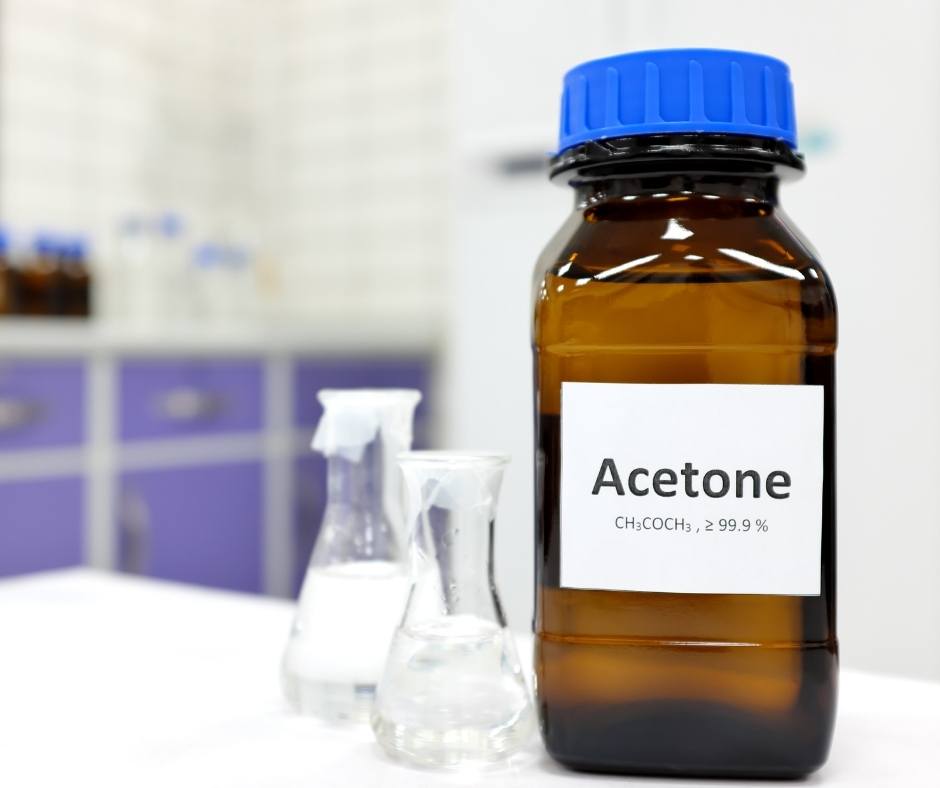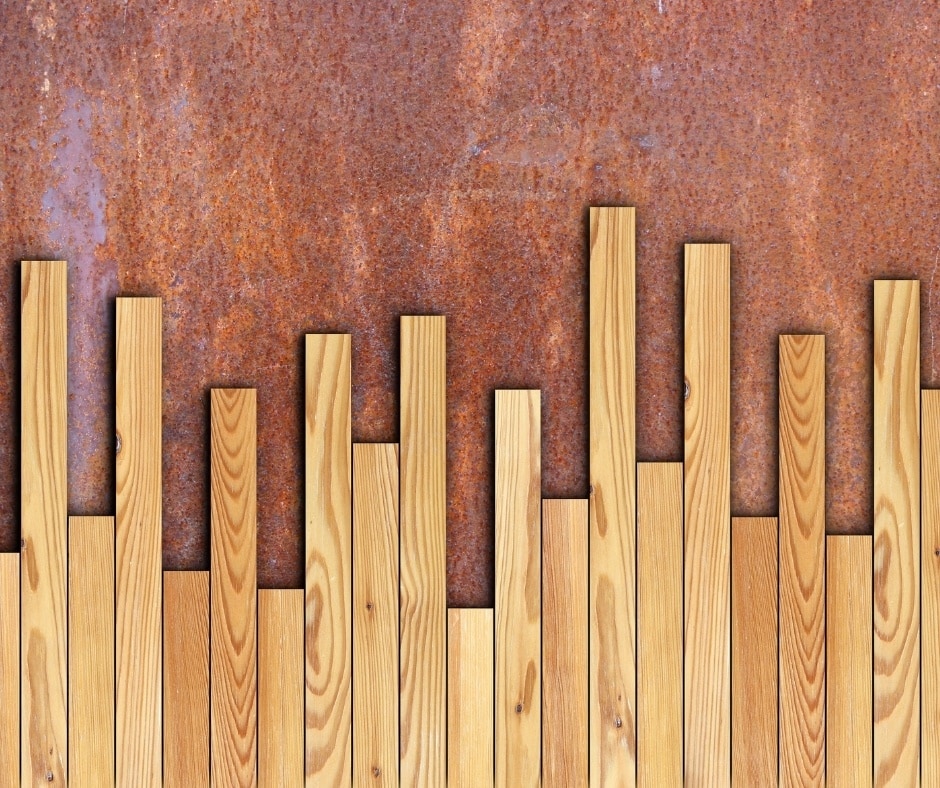It’s likely that at some point, you might drip glue on your wood floor. You might do this while working on a different project. You might also do this while working on the floor itself. If that happens, no need to panic. We promise you that you can get it up.
The trick is knowing what to use to clean it up and how to clean it up.
That’s where we come in. We took a look at how to clean up glue from wood floors for you, and put together this article. We hope you find it useful.
In This Article We'll Discuss
How to Remove Glue from Wood Floors

Acetone is normally the go-to solvent for unwanted glue. It is designed to dissolve a range of things, including glues. If your flooring is finished, however, using acetone might damage the finish.
In those cases, you’ll want to go with a solution of vinegar and warm water. It isn’t as strong, but it also won’t damage the finish.
Once you’ve determined your solvent, the next step is cleaning the glue from your floor.
Start by either scraping off as much as possible or using high-grit sandpaper to remove as much of the glue as possible. High-grit sandpaper will get up the glue while minimizing the damage if you happen to nick the wood. If you start hitting wood with either, stop and move on.
Use a hairdryer set on high to warm the remaining glue. Once warmed, glue is easier to remove. See if you can physically remove any more of the glue, because that will reduce the amount of solvent you need and also the time.
As an alternative, you can also cover the glue with a paper towel dampened with hot water and wait a few minutes.
Once you have as much of the glue up as you can, then use your solvent. Dampen either a clean cloth or a paper towel with it. Remember, acetone works best for unfinished floors, vinegar for finished floors.
Leave it there for a few minutes and then wipe it up. You might not get it all on your first application. That’s okay. Just keep doing it until your floor is clean.
What will Dissolve Floor Glue?
There are two primary solvents when it comes to removing glue, acetone and vinegar.
Acetone is the best, most powerful one on the market. It works great on any glue up to and even including cyanoacrylates. That family of glues includes the strongest glues on the market, including Gorilla glue and super glue.
It also has the drawback that it might damage finishes and dissolve paint. So, be aware of any unintended negative consequences that might come from using acetone. If they are significant, you might wish to downgrade to vinegar.
Vinegar is a natural solvent for just about everything. It isn’t nearly as powerful as acetone, but it also isn’t as likely to damage finish or dissolve paint. If you use it, just don’t think that you need to use more to make up for its weaker power.
You can also use a few other things if the glue on your floor isn’t very strong.
Warm, soapy water will dissolve water-based glues. You can also use the citric acid of an orange or a lemon to remove glues like wood glue.
Will Vinegar Remove Glue from Wood Floors?

Vinegar is one of your best options to remove glue from a wood floor. If your wood floor is finished, vinegar is your go-to solvent because it won’t damage the finish.
Apply that across the board. While acetone is the standard glue remover of first resort, if you have any concerns that you might damage what you’re trying to clean, vinegar is probably your best bet.
You can use the vinegar undiluted for most glues. If the glue on your floor is especially difficult to remove, you can microwave it for a few seconds before applying it with a paper towel. The heat will help loosen the glue particles and make it easier to clean up the glue.
How do you Remove Dried Glue from Wood Floors?
The first tool in removing dried glue from wood floors is patience. The biggest reason why you want to clean up glue as soon as you spill it is that when it’s wet it is the easiest to clean up. When it dries, it will take time and patience.
If the glue has dried, scrape or sand down as much of it as is possible. Solvents act on the surface of glue and won’t dissolve it in giant chunks, so get a head start. Either use a scraper or high-grit sandpaper to physically remove as much of it as is possible.
Once you have the glob reduced to close to the floor, heat it to loosen the glue particles. Either use a hairdryer on its lowest setting to prevent damage or lay a paper towel dampened with warm water on top.
Leave it there for a few minutes and see what you can remove.
Heat it again and use a solvent to remove the rest of the glue.
Acetone is everyone’s first choice for removing glue. It will even work on some cyanoacrylates, the family of glues that includes super glue. But if your floor is finished, acetone will damage the finish and can dissolve paint.
If that’s the case, use vinegar. Vinegar isn’t as strong as acetone, but don’t compensate for that by using a lot more.
Dampen a clean rag or paper towel with your solvent and lay it over the top of the glue. Let it sit a few minutes to work its magic and clean it up. You might need to apply it several times to completely clean the glue.
Conclusion

Acetone and vinegar are your best friends as solvents in cleaning glue from floors, as is a little bit of heat. Most important of all, however, is approaching the job with a little bit of patience.
Warming the gob of glue will loosen it up, which will make it faster to apply the solvent and then clean it up. Which solvent will depend in large part on whether the floor is finished or unfinished.
We hope you found this article of value and that it helps you clean your unsightly glue blemishes from your wood floors. If you did, feel free to leave a comment down below. You can also share it on social media, where it might help your friends.

